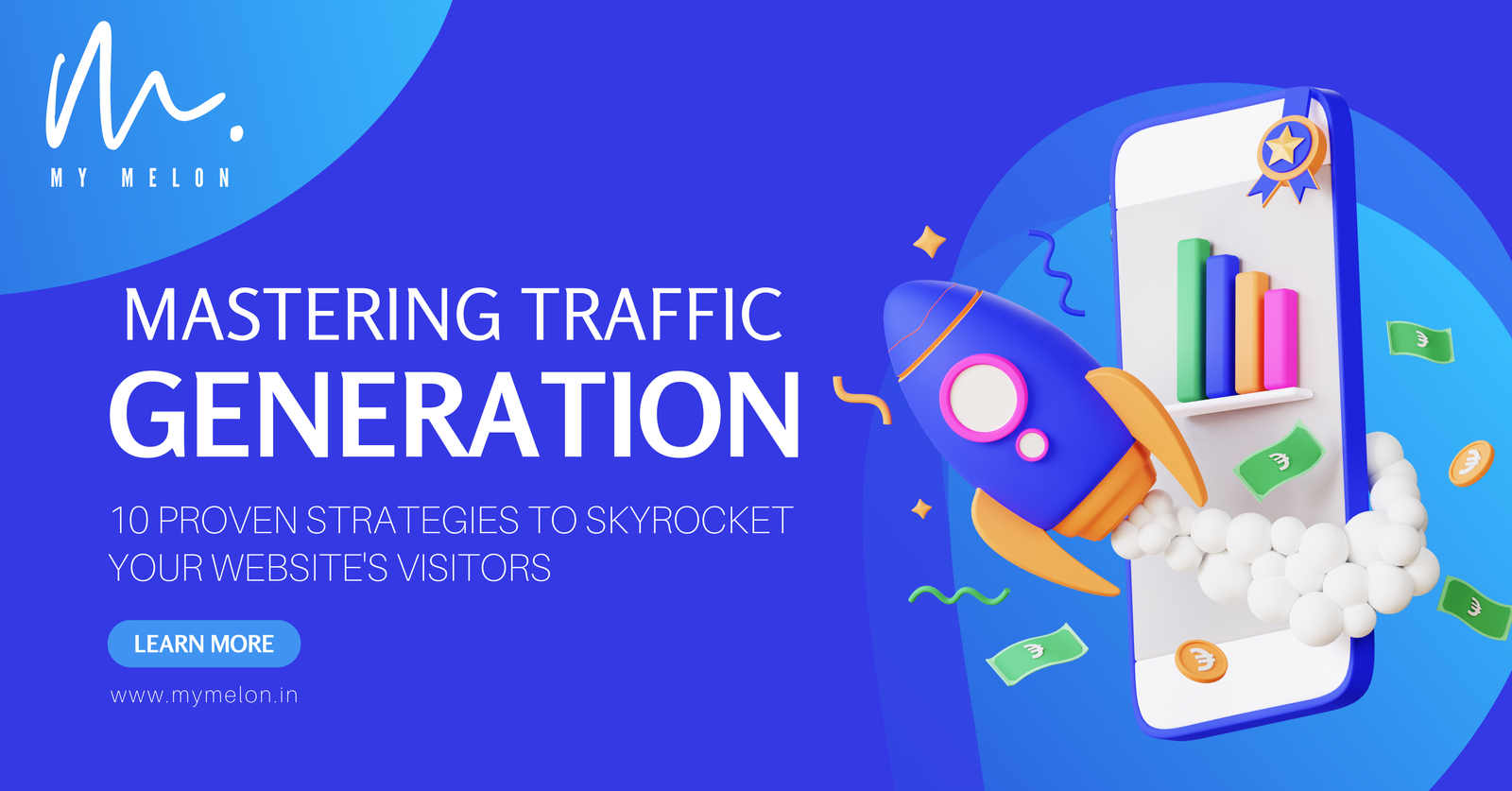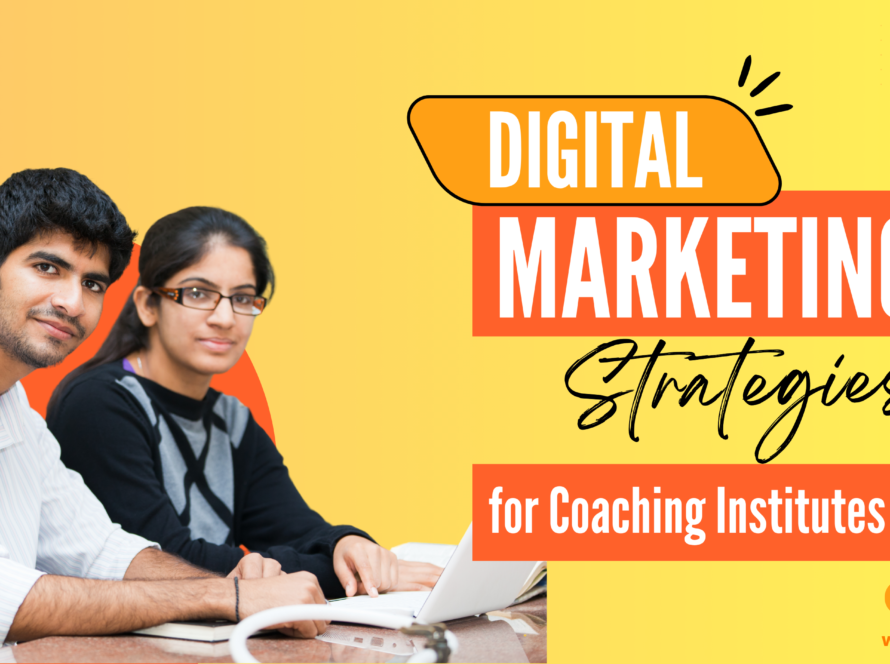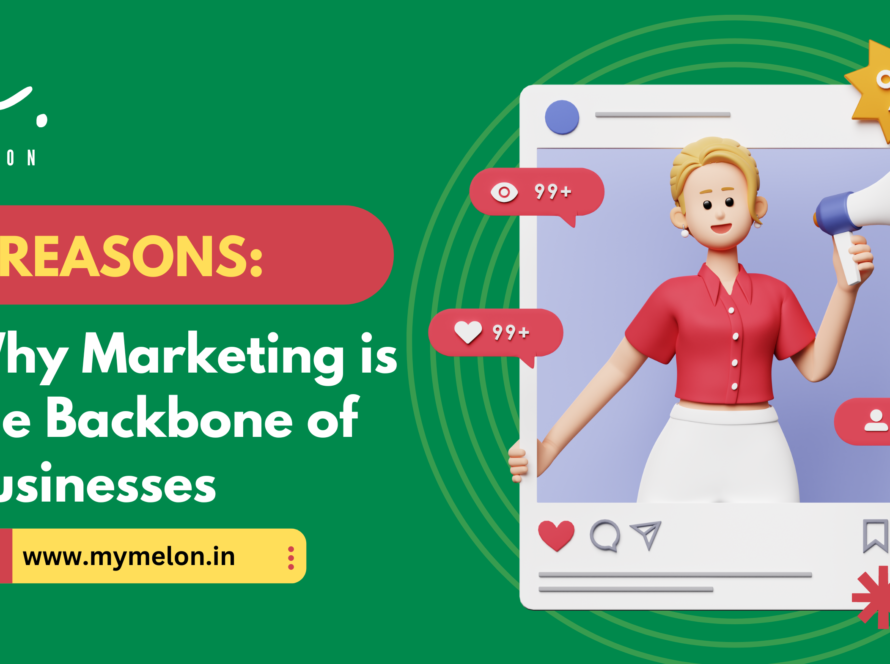A website is often the first touchpoint between your business and potential customers. It serves as your digital storefront, and just like a physical store, you need foot traffic to thrive. Without visitors, your website is just a beautiful but empty space.
Before delving into the 10 proven strategies for increasing website traffic, it’s essential to ask a series of key questions to ensure you’re on the right path.
Who is your target audience?
Understanding your audience’s demographics, preferences, and needs is the foundation for any successful web traffic strategy.
What are your specific website goals?
Define what you aim to achieve with increased traffic. Is it more sales, brand awareness, lead generation, or something else?
What is your current traffic and performance?
Evaluate your current website traffic, conversion rates, and other relevant metrics to establish a baseline for improvement.
What resources are available?
Consider your available time, budget, and team resources to determine which strategies are feasible for your situation.
Are there any specific challenges or obstacles?
Identify any existing challenges, such as high competition in your niche or technical issues on your website, that may impact your traffic-building efforts.
Once you’ve answered these questions, you can proceed with confidence into the 10 proven strategies we have gathered to attract a flood of visitors to your website, tailoring them to your unique situation and goals.
- High-Quality and Valuable Content
Creating high-quality content is more than just writing blog posts or articles as it involves crafting content that resonates with your target audience. Your content should address their pain points, answer their questions, and provide real value.
Blogging and SEO…
Blogging, when done right, can significantly impact your website’s traffic. Successful bloggers understand the importance of not just creating content but optimizing it for search engines. Take the example of “Moz,” an industry leader in SEO.
Moz’s blog provides in-depth articles, guides, and tutorials on various SEO topics. They have mastered the art of using targeted keywords, creating valuable content, and building backlinks, which has resulted in a substantial organic traffic boost.
Guest Posting on Reputable Websites…
Guest posting is a tried-and-tested method to reach a wider audience. When you contribute to reputable websites in your niche, you can tap into their existing readership.
Pro Tip: Emphasizing the significance of ongoing keyword research is essential to stay ahead of evolving search trends.
2. Search Engine Optimization (SEO)
On-Page Optimization…
Use relevant keywords, optimize title tags, meta descriptions, and use header tags effectively. When done correctly, on-page optimization can significantly improve your website’s visibility on search engines.
Backlinko reports that pages in the first position of Google receive an average CTR (click-through rate) of 31.7%.
Off-Page Optimization…
Off-page SEO focuses on factors outside your website that impact your search engine rankings. Backlinks and social signals play a crucial role. Social signals, like shares and likes, also influence search engine rankings.
Brian Dean’s SEO blog has gained recognition by producing exceptional content that earns high-quality backlinks. His comprehensive, data-driven articles and case studies have not only attracted a substantial audience but also resulted in natural backlinks from authoritative websites.
Keyword Research and Targeting…
Keyword research is the foundation of SEO. Understanding what keywords your audience is searching for can help you create content that aligns with their needs.
Pro Tip: Backlinks from authoritative websites indicate the quality and trustworthiness of your content.
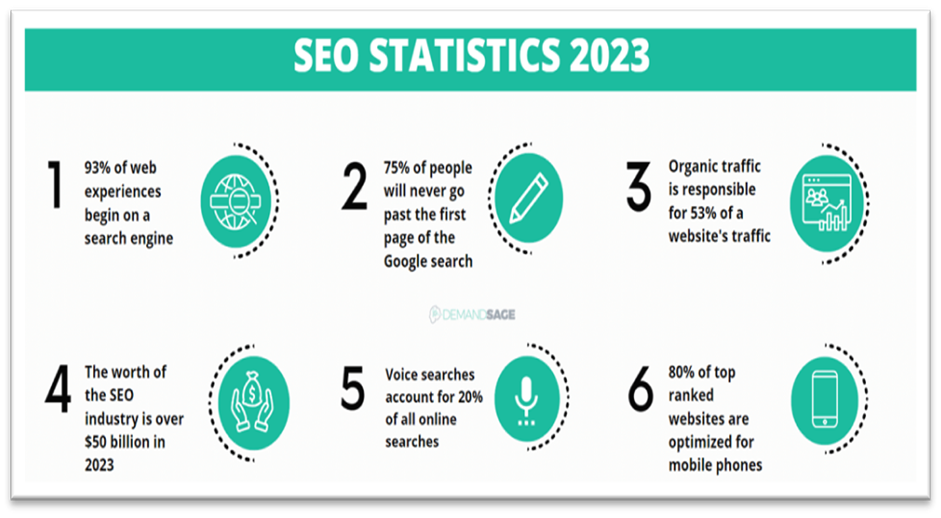
Figure 1Source: Demand Sage
3. Social Media Marketing
Leveraging Popular Social Media Platforms…
With billions of users on social media platforms, tapping into these networks is a must for website traffic. One of the prime examples is “National Geographic.”
National Geographic’s captivating visual content, combined with storytelling, has garnered over 100 million followers on Instagram. Their social media strategy has increased website traffic significantly by sharing stunning images and thought-provoking stories.
Content Sharing and Engagement Strategies…
Engagement is key in social media marketing. Encourage discussions, ask questions, and respond to comments. When your content is engaging, users are more likely to share it with their networks, increasing your reach and driving more traffic.
Red Bull, the energy drink giant, excels at creating shareable content. Their exciting videos and extreme sports content are widely shared on social media. The engagement and shares translate into higher website traffic, as people are eager to watch their next thrilling video.
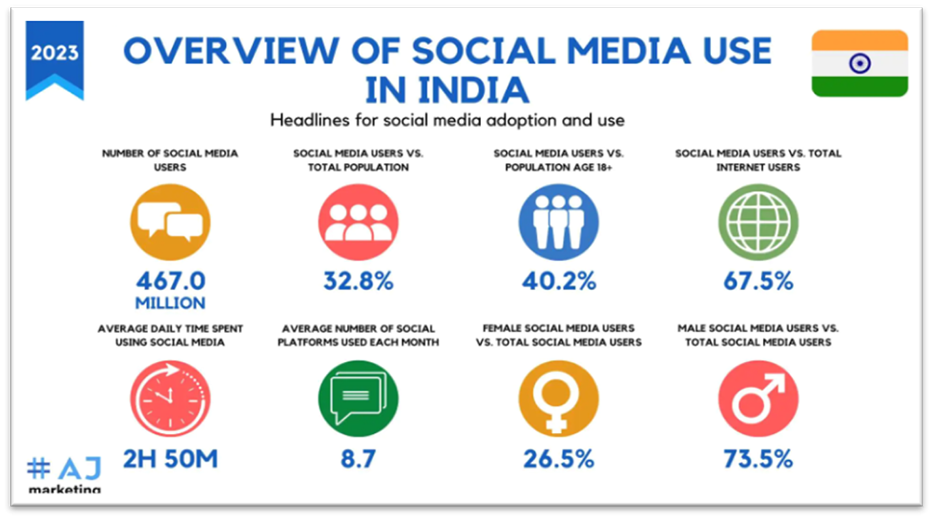
Figure 2Source: AJ Marketing
Leveraging Popular Social Media Platforms…
Social media platforms have massive user bases, making them essential for increasing website traffic. To leverage them effectively, create and share content that resonates with your audience on platforms like Facebook, Twitter, and Instagram. Visual content, such as images and videos, can be particularly effective in engaging users.
Facebook remains the most popular social media platform, with over 2.9 billion monthly active users (Statista).
Pro Tip: Post consistently and experiment with different content formats to find what resonates with your audience.
4. Email Marketing
Building and Nurturing an Email List…
Building a robust email list is an essential asset for website traffic. However, it’s not just about collecting email addresses but nurturing them with valuable content. Regularly sending newsletters, updates, and exclusive offers to your subscribers can drive consistent, high-converting traffic.
Creating Compelling Email Campaigns…
Email campaigns should be more than just generic messages. Create email campaigns that are personalized and tailored to your audience’s needs. Use storytelling and compelling content to keep subscribers engaged and interested in visiting your website.
Personalization and Segmentation…
Personalization involves tailoring your email content to individual user behavior and preferences. Segmenting your email list based on user interests and behaviors can significantly improve open rates and click-through rates. The more relevant your emails are to subscribers, the more likely they are to visit your website.
Statistics show that 59% of consumers state marketing emails either positively or negatively influence their purchasing decisions. 80% of business professionals attest to email marketing increasing customer retention.
Pro Tip: A/B testing is crucial to optimize email campaign performance.
5. Influencer Marketing
Identifying Relevant Influencers in Your Niche…
Influencer marketing can be highly effective when you partner with the right influencers. “Daniel Wellington” showcases this strategy perfectly.
Daniel Wellington, a watch brand, skyrocketed to fame through influencer marketing. They collaborated with numerous Instagram influencers who featured their watches in their posts. These partnerships resulted in a massive influx of traffic to their website.
Collaborating with Influencers…
Effective influencer collaborations are based on authenticity. Ensure that the influencer genuinely believes in your product or service. When influencers authentically endorse your offerings, their followers are more likely to trust their recommendations and visit your website.
Measuring the Impact of Influencer Marketing…
To assess the effectiveness of influencer marketing, track the impact of influencer posts on website traffic and conversions. This data can guide you in fine-tuning your influencer marketing strategy for maximum impact.
Edelman reports that 63% of consumers trust influencers more than brands when making purchasing decisions.
Pro Tip: Build long-term relationships with influencers for sustained brand exposure.
6. Paid Advertising
Google AdWords and Pay-Per-Click (PPC)…
Paid advertising, such as Google AdWords, can provide an immediate boost in traffic. Craft compelling ad copy, target relevant keywords, and optimize your ad campaigns to ensure they reach the right audience.
Social Media Advertising (e.g., Facebook Ads)…
Social media advertising, particularly through platforms like Facebook Ads, offers highly targeted advertising options. Create specific ads and offers that resonate with your audience, increasing the likelihood of driving traffic to your website. Shopify, an e-commerce platform, uses Facebook Ads to target entrepreneurs and business owners. By crafting specific ads and offers, they attract potential clients, leading to higher website traffic.
Retargeting and Display Ads…
Retargeting involves showing ads to users who have previously visited your website but didn’t complete desired actions, such as making a purchase. These ads serve as reminders and often bring users back to your site.
The average click-through rate (CTR) for Google Ads search campaigns is approximately 3.17%, as reported by WordStream.
Pro Tip: Set a clear budget and diligently monitoring ad spend to maximize ROI.
7. Online Communities and Forums
Finding and Participating in Relevant Online Communities…
Active participation in online communities can drive targeted traffic. Stack Overflow, a programming Q&A site, serves as an excellent example of how an online community can drive traffic. By providing answers and solutions to programming queries, they attract a large audience of developers who often visit their website.
Providing Value and Building Relationships…
Online communities value authentic contributions. “Reddit” demonstrates how valuable interactions can lead to website traffic. Users who engage in discussions and share valuable insights often gain traffic to their websites.
Avoiding Spammy Behavior…
While online communities can be a goldmine for website traffic, spammy behavior can backfire. Avoid excessive self-promotion and focus on adding value to the community. Quora is a platform that promotes genuine value. By providing thoughtful responses and linking to relevant content, you can drive traffic without being spammy.
Pro Tip: Do active participation in communities and avoid overly promotional behavior.
8. Mobile Optimization
Responsive Web Design…
Mobile optimization is critical in a world where a significant portion of internet users access websites via mobile devices. Implement responsive web design to ensure your site adapts seamlessly to different screen sizes, providing an excellent user experience.
Apple’s website is a testament to the power of responsive design. It seamlessly adapts to different screen sizes, ensuring an excellent user experience on mobile devices, which has become a standard practice for successful websites.
Fast-Loading Mobile Pages…
Page speed is a crucial factor in mobile optimization. Google continually emphasizes the importance of page speed. They use their PageSpeed Insights tool to help webmasters optimize their websites for faster loading, ultimately improving user experience and driving more mobile traffic.
Mobile App Promotion…
If your business has a mobile app, promoting it can drive mobile traffic to your website. Encourage users to download the app and offer exclusive content or features through the app to attract and retain mobile users.
As of September 2023, people using mobile devices contribute to 55.5% of all website traffic.
9. Video Content Strategy
The Power of Video Content…
Incorporating video content into your website can be a game-changer for attracting and retaining visitors. Video is a highly engaging and shareable format that appeals to a wide audience. It has the potential to convey information more effectively and create a stronger connection with your audience than text or images alone.
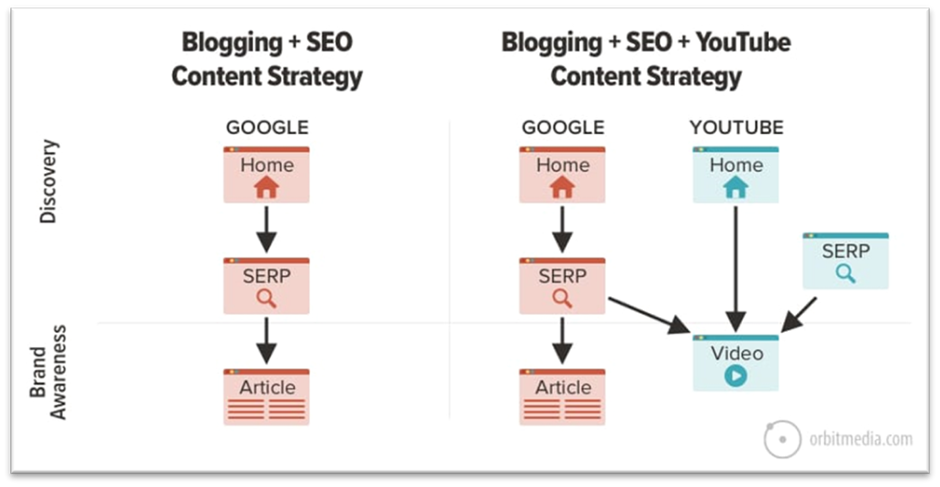
Figure 3 Source: Orbit Media
Crafting a Video Content Strategy…
Develop a video content strategy that includes informative and entertaining videos related to your niche. Whether it’s how-to guides, product demonstrations, or compelling stories, well-crafted videos can increase user engagement and drive more traffic to your website. Consider the preferences and interests of your target audience, and align your video content with your overall marketing goals. By consistently creating and sharing valuable videos, you can create a compelling reason for visitors to explore your website and return for more.
Research from Wyzowl found that 69% of consumers say they prefer learning about a product or service through a short video, versus 18% who prefer written text.
Pro Tip: When incorporating video content into your website, don’t forget to optimize it for search engines. Use relevant keywords in video titles, descriptions, and tags.
10. Analytics and Continuous Improvement
Using Tools Like Google Analytics…
Kissmetrics, a customer analytics platform, provides insights into user behavior and conversion funnels. By using analytics, they help businesses improve their website’s performance, resulting in higher traffic and conversions.
Monitoring Traffic Sources and User Behavior…
Understanding where your traffic comes from and how users behave on your site is vital for optimizing your traffic sources. Tools like BuzzSumo can provide insights into which content performs best in terms of social shares and backlinks. This data can help you tailor your content strategies to attract more traffic from specific sources.
Making Data-Driven Adjustments and Optimizations…
In a data-driven world, making informed decisions is crucial. Continuously analyze user behavior, feedback, and conversion rates to make data-driven adjustments to your website. This iterative process can lead to a better user experience and ultimately drive more website traffic.
Booking.com uses data to improve its website’s performance continually. By analyzing user behavior, feedback, and conversion rates, they make data-driven adjustments, leading to a better user experience and more website traffic.
Pro Tip: Measure the return on investment (ROI) of each marketing channel and adjust strategies accordingly.
Which Tactic is best for your business?
Selecting the right tactics to increase web traffic is essential for the success of your online business. Here’s a breakdown of key considerations for choosing the best tactics:
- Tactic Type: Short-term vs. Long-term
Short-term Tactics: These strategies typically yield quicker results but require ongoing maintenance or reinvestment. Examples include paid advertising, social media promotions, and email marketing campaigns.
Long-term Tactics: These methods take longer to see results but offer more sustainable, evergreen benefits that require minimal maintenance. They include search engine optimization (SEO), content marketing, and building a strong brand presence.
- Effort Required
High Effort: Some tactics demand a significant investment of time, skill, or expertise. For instance, content marketing and SEO often require consistent effort and expertise.
Low Effort: Other tactics may be less demanding in terms of effort. Social media posting, email marketing automation, and some paid advertising options fall into this category.
- Time to ROI
Days: Some tactics can generate results within days. Paid advertising and email marketing, for example, can yield a relatively quick return on investment.
Weeks: Tactics like content marketing and social media engagement may take a few weeks to show noticeable results.
Months: Strategies such as SEO and building a brand reputation often require several months before their full impact is seen.
- Cost
High Cost: Paid advertising, particularly on competitive platforms, can be expensive. It requires a budget to start and sustain.
Low Cost: Content marketing and social media engagement can often be launched with minimal upfront expenses. However, they may require more time and effort investment.
- Traffic Potential
High Traffic Potential: Paid advertising has a substantial traffic potential, as you can allocate a budget to reach a wide audience quickly.
Moderate Traffic Potential: Content marketing and SEO can generate a steady flow of traffic over time, but they may not result in an immediate traffic surge.
Choose Wisely and Be Consistent!
Select a tactic that aligns with your business’s goals. Aim to focus on one or a few tactics that you can consistently maintain. Spreading yourself too thin by attempting numerous strategies simultaneously can lead to frustration and less effective results.
Remember… the best tactic for your business depends on your specific goals, target audience, and available resources. It’s indeed essential to regularly analyze your results and adapt your strategy to achieve optimal web traffic growth.



